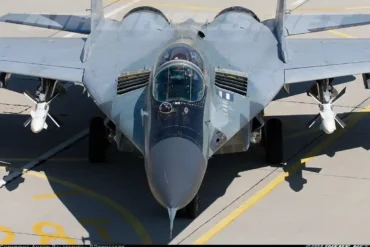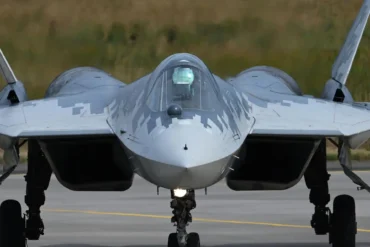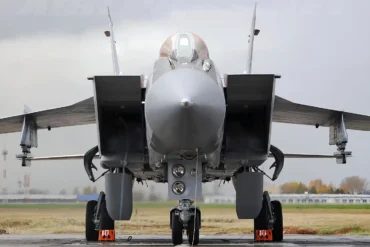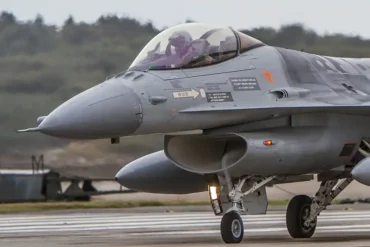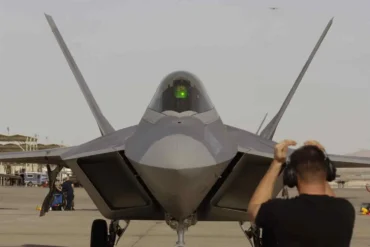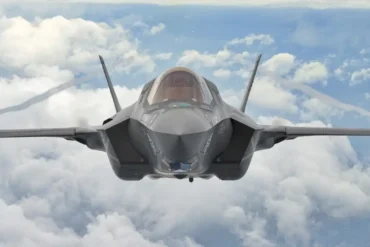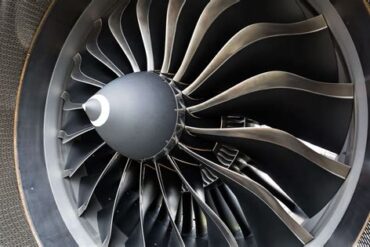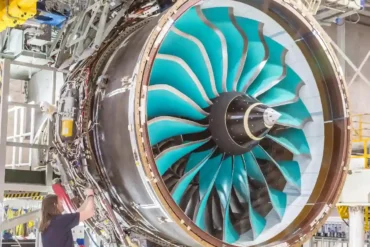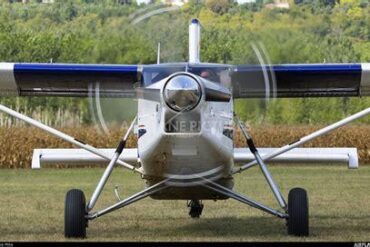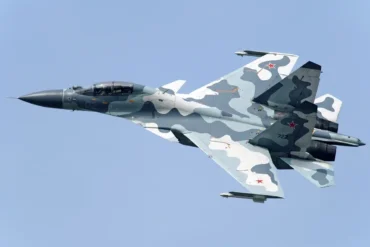The Sukhoi Su-35 and the MiG-29 are two of Russia’s most iconic fighter aircraft, each playing a vital role in the country’s air defense strategy. While both are formidable machines, they possess distinct design elements that influence their performance and operational capabilities. One of the key differences between these two aircraft lies in the design of their engine intakes. Unlike the MiG-29, which is equipped with engine intake doors, the Su-35 does not feature such doors. The reasons behind this design choice are multifaceted and stem from a variety of operational, technological, and performance considerations.
The Role of Engine Intake Doors in the MiG-29
Foreign Object Damage (FOD) Prevention
The MiG-29, designed primarily as a multirole fighter for a range of combat operations, is equipped with a set of engine intake doors that close during taxiing and open when the aircraft is ready to take off. These intake doors serve a crucial function—protecting the engine from foreign object damage (FOD), which is one of the leading causes of engine failure and degradation in military aircraft. FOD can occur when debris, such as stones, dirt, or other foreign objects, are ingested into the engine during takeoff or taxiing, causing potential damage to critical components like the turbine blades or compressors.
The MiG-29 is built with the capability to operate from rough, unprepared airstrips. These environments are often filled with debris, dirt, and other hazards that could pose a significant risk to the engine’s functionality. To mitigate this risk, the MiG-29 employs a set of intake doors, which are mechanically controlled and automatically close when the aircraft is on the ground or taxiing. When the aircraft is ready to take off, the intake doors open to allow the necessary airflow for engine operation.
Dual-Intake System for Airflow Optimization
In addition to the intake doors, the MiG-29 also incorporates a dual-air inlet system. This system includes two sets of air inlets. The first set is positioned below the aircraft’s wings, while the second set is located on top of the leading edge root extension (LERX), often referred to as the wing glove. The LERX inlets are particularly important during flight, as they provide additional airflow for engine combustion when the lower inlets are closed by FOD screens. This dual system ensures that the engine receives a continuous supply of air, whether on the ground or in the air, and optimizes engine performance in various operational environments.
Why the Su-35 Doesn’t Need Intake Doors
In contrast to the MiG-29, the Sukhoi Su-35 does not feature engine intake doors. This design decision can be attributed to several key factors, all of which contribute to the aircraft’s superior performance and operational flexibility.
Su-35’s Evolution from the Su-27 Platform
The Su-35 is an evolution of the Su-27, a fourth-generation fighter that was designed for high-speed, long-range air superiority missions. The Su-35, as a more advanced version of the Su-27, was engineered to operate from well-prepared military airfields. Unlike the MiG-29, which was designed with flexibility for rough, forward-deployed airstrips, the Su-35 is optimized for use in environments where the risk of FOD is significantly reduced. Military airfields are typically paved and maintained to a much higher standard than the unprepared runways where the MiG-29 might operate. This eliminates the necessity for the intake doors found on the MiG-29.
Improved FOD Tolerance in Su-35 Engines
One of the significant advantages of the Su-35 is the engine technology it uses. The aircraft is powered by the Saturn AL-41F1S engines, which are more advanced than the engines found on older aircraft like the MiG-29. These engines have been designed with improved FOD tolerance, meaning they are better equipped to withstand the ingestion of small foreign objects. This advanced engineering reduces the risk of engine damage from debris, making the intake doors unnecessary. The Su-35’s engines are also equipped with modern features that enhance their durability and resistance to wear and tear, further contributing to the aircraft’s operational longevity.
Aerodynamic Design and Engine Placement
The aerodynamics of the Su-35 also play a role in eliminating the need for intake doors. The aircraft is designed with a highly advanced and efficient supermaneuverable airframe, which includes features like a thrust-vectoring control system and advanced wing design. These features not only improve the aircraft’s performance in combat but also help mitigate the risk of FOD. The engine intakes on the Su-35 are positioned in such a way that they are less likely to ingest foreign objects, even when operating in environments where small debris might be present.
The placement of the engines on the Su-35 further reduces the likelihood of FOD damage. Unlike older aircraft that may have engine intakes placed in more exposed positions, the Su-35’s intake design is more integrated into the airframe. This minimizes the amount of debris that can potentially be drawn into the engines, even in less-than-ideal operating conditions.
Reduced Weight and Mechanical Complexity
By eliminating the intake doors, the Su-35 benefits from a reduced weight and mechanical complexity, both of which enhance overall aircraft performance. Every additional component on an aircraft adds weight, and the intake doors are no exception. By removing them, the Su-35 is able to carry more fuel, weapons, or other mission-essential equipment without compromising its flight performance. Moreover, the absence of moving parts such as intake doors decreases the risk of mechanical failure, enhancing the overall reliability and maintainability of the aircraft.
Comparison of the Su-35 and MiG-29 in Operational Context
MiG-29: Versatility for a Wide Range of Environments
The MiG-29, with its engine intake doors, is built for a different set of operational conditions compared to the Su-35. Its design is more suited to forward-deployed operations and can handle a broader range of environmental conditions, including unprepared airstrips. The intake doors make it possible for the MiG-29 to operate in these challenging environments while still maintaining engine integrity. This makes the MiG-29 a highly versatile aircraft, capable of operating in a wide range of locations, including austere and less-developed airfields.
Su-35: Precision and Performance from Prepared Airfields
In contrast, the Su-35 is designed to excel in more specialized environments, namely well-prepared military airfields. Its design optimizations make it perfect for high-speed, high-performance missions in environments where FOD is less of a concern. The Su-35 excels in precision strike capabilities, air superiority roles, and advanced combat scenarios where its advanced avionics, weapons systems, and superior maneuverability give it a significant edge over adversaries.
The absence of intake doors also means that the Su-35 is more aerodynamically efficient, which improves its fuel efficiency and overall operational range. Its capability to perform complex maneuvers, coupled with its superior range and advanced sensors, make the Su-35 a versatile and deadly asset in modern aerial combat.
The Engineering Philosophy Behind Both Aircraft
The design philosophies behind the MiG-29 and Su-35 reflect the different roles each aircraft was intended to fulfill. The MiG-29’s emphasis on versatility and readiness for operations from austere conditions meant that the aircraft required additional protection for its engines. Intake doors were a practical solution to mitigate the risks associated with operating from less-than-ideal runways.
On the other hand, the Su-35’s evolution from the Su-27 focused on creating a high-performance fighter that could operate from well-established airfields with lower risk of engine damage from FOD. The decision to forgo intake doors was based on the aircraft’s advanced engine technology, better engine placement, and improved aerodynamic design, which collectively made these protective features unnecessary. The result is an aircraft that is lighter, more reliable, and capable of sustained high-performance flight in a variety of combat scenarios.
Conclusion
In summary, the Su-35’s lack of engine intake doors compared to the MiG-29 is a result of its design priorities and the operational environments in which it is intended to function. While the MiG-29’s intake doors serve an essential purpose in protecting the engines during operations from less-maintained airstrips, the Su-35’s advanced engine technology, aerodynamic design, and reliance on well-prepared airfields make intake doors unnecessary. This difference highlights the unique roles each aircraft was designed to fulfill, with the Su-35 prioritizing high-performance combat operations and the MiG-29 offering versatility in a wider range of operational conditions. Ultimately, both aircraft are incredibly capable, but their design choices reflect their distinct operational doctrines and intended roles in modern warfare.

